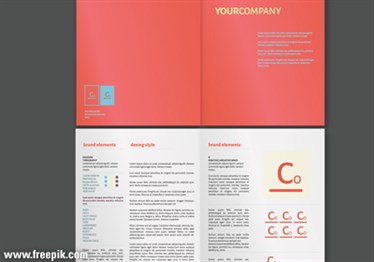Content Strategy: Style Guide
Businesses generate all types of content, from website copy to marketing materials to user documentation. Unless you have a content strategy in place to plan and manage all of your customer-facing content, you could appear like a very fragmented company, which doesn’t present a good image to your customers.
A content strategy involves many components in order to meet user needs along the buyer’s journey. One of those components is a style guide. By following the rules in a style guide, you can produce more consistent English and global content, leading to a better customer experience and saving time while protecting your brand.

What is a Style Guide?
A style guide is a set of standards for those who create and design content to follow. It can include best practices and company standards for things like colors, font types and sizes, logo usage, graphic guidelines and much more. Establishing standard terminology is another important way to maintain consistency. If you have things like acronyms, company terminology and product terminology, these items can be included in a style guide. If you globalize your content, your language service provider (LSP) can extract these terms into their translation memory for their linguists to use, which improves global content consistency.
A style guide can be relatively simple or quite extensive, depending on the type of assets you have. For example, if you’re a small business with a website and marketing materials, you can probably have a smaller style guide. However, if you produce software or technical manuals, your style guide might be much larger. Style guidelines can be applied to all customer-facing content such as your website, user documentation, software, apps, marketing materials like brochures, social media, product labels, sales presentations and more.
If you’re part of a large company, you probably have a corporate style guide that covers branding items for customer-facing assets. If not, your marketing or HR department may have some general guidelines. If you don’t have anything, you could create a style guide, which would benefit the entire company and also you professionally. Your LSP can also help you create a style guide.

Why Should You Create a Style Guide?
If everyone who creates and designs content within a business follows the same standards, imagine what a consistent customer experience that would be. Your website looks and sounds like your app, your user documentation and more. Internally, it saves time for your content reviewers as they don’t have to focus on design and style issues – they can focus on the content itself.
Your Global Customers Will Benefit
If you’re currently localizing your content through an LSP or thinking about globalizing your business, providing a style guide up-front will be very beneficial to your LSP. It will allow them to get a clear scope of design work so they can set realistic deliverable dates and provide optimum communication with their linguists. They may also spot items in the English content that don’t adhere to the style guidelines, which will improve the English. In addition, you’ll achieve consistency within a language and between languages, and reduce the amount of review cycle time towards the end of a project since the design expectations should already be met. As a result, your global customers will have a consistent experience across your business.
Conclusion
Using a style guide to create consistent content and design benefits your English and global customers, resulting in a better user experience. It also reduces the amount of internal review time and protects your brand.
